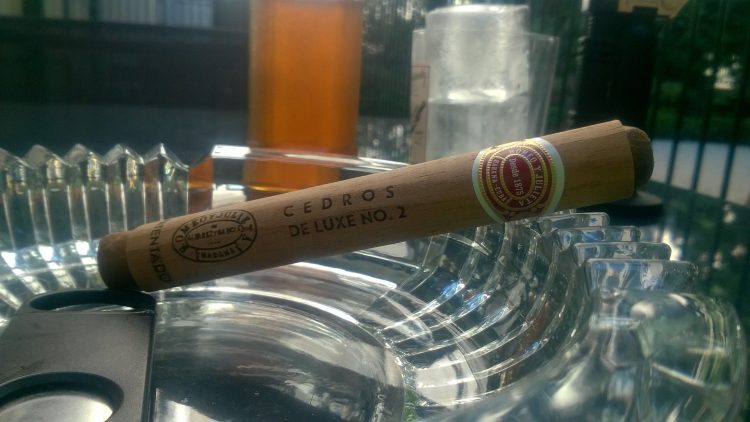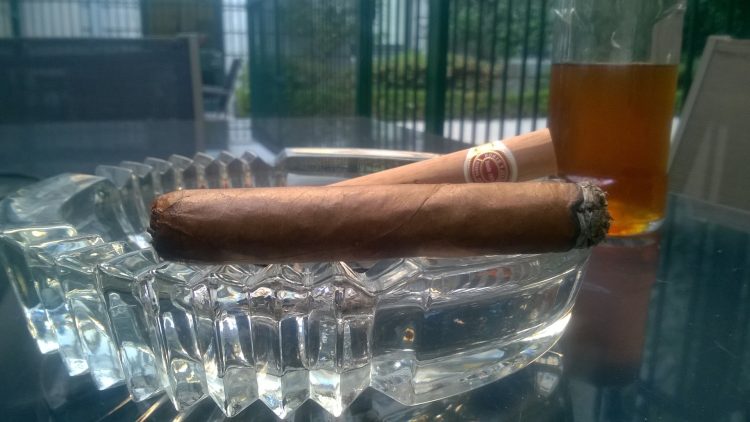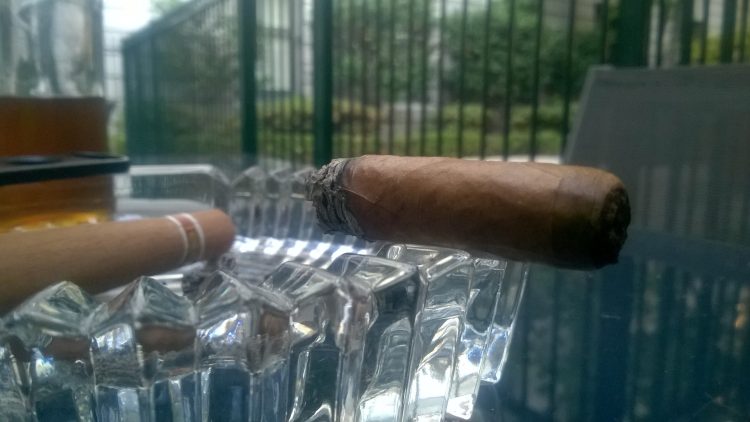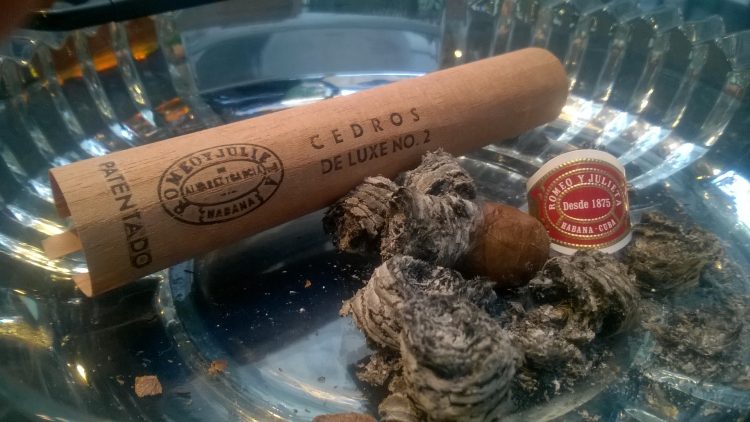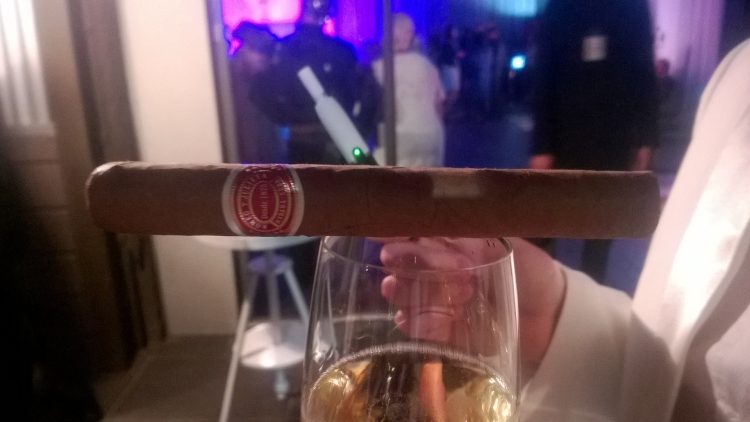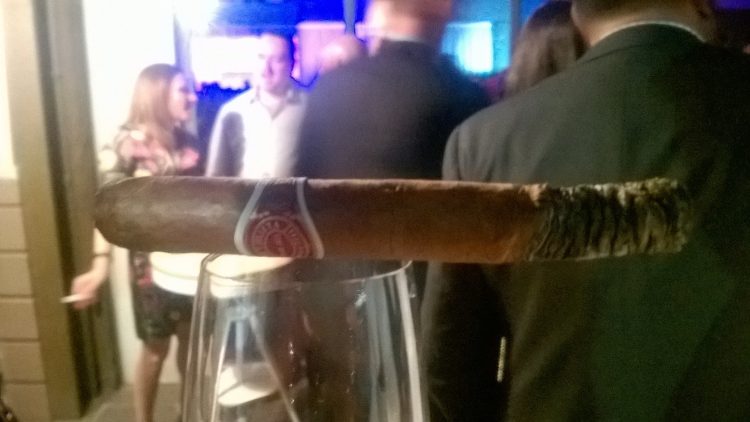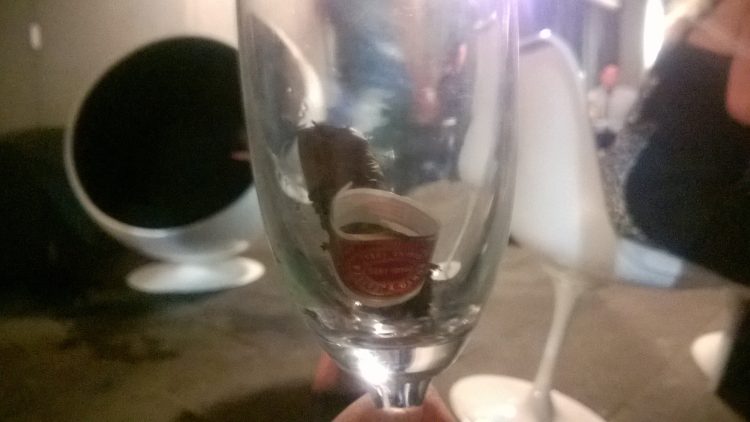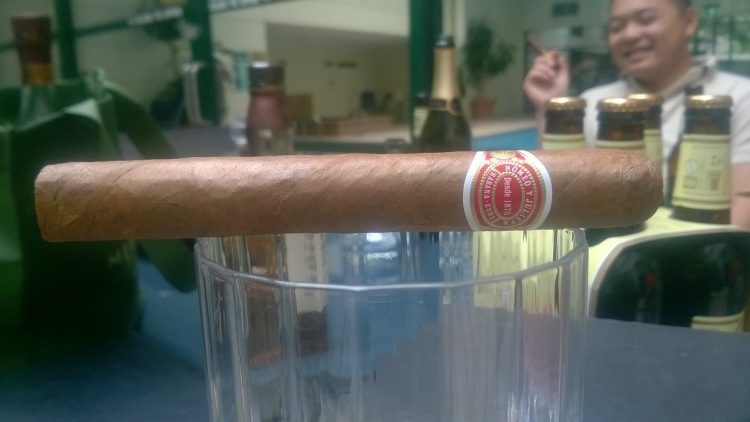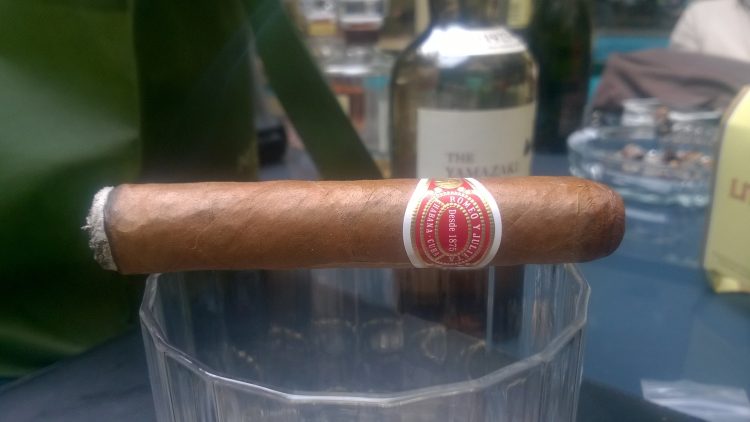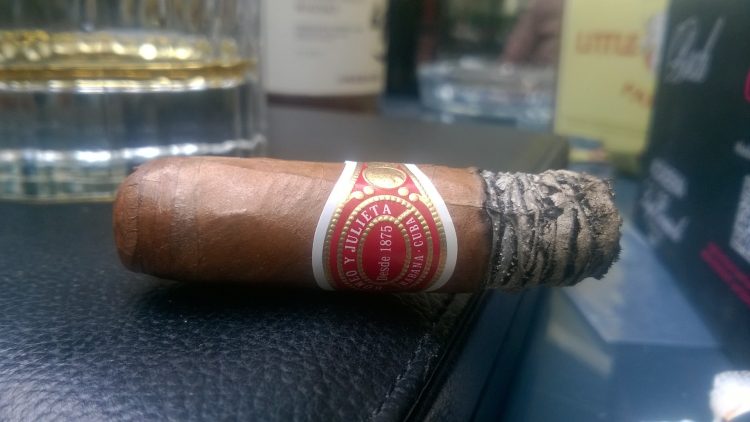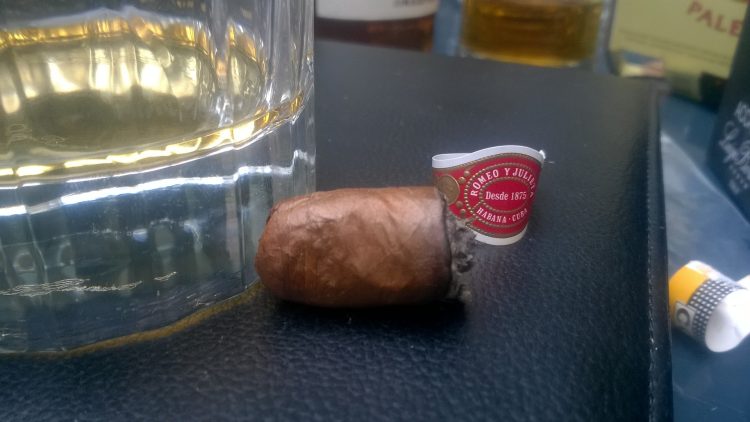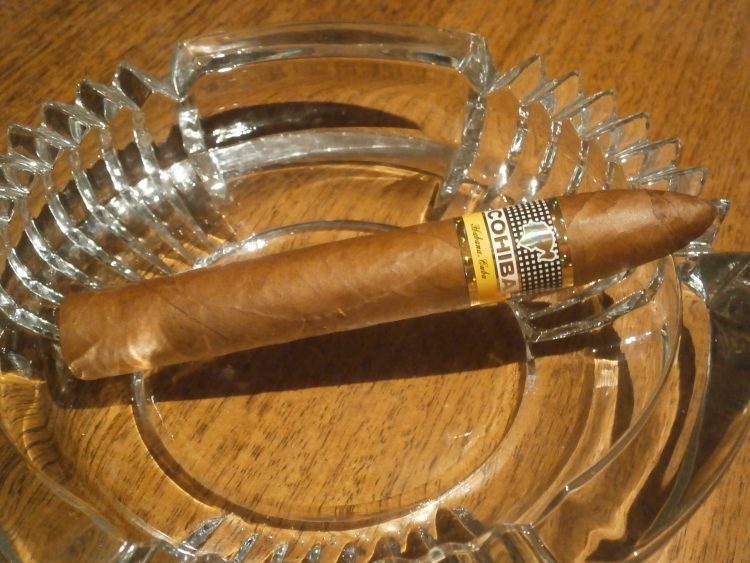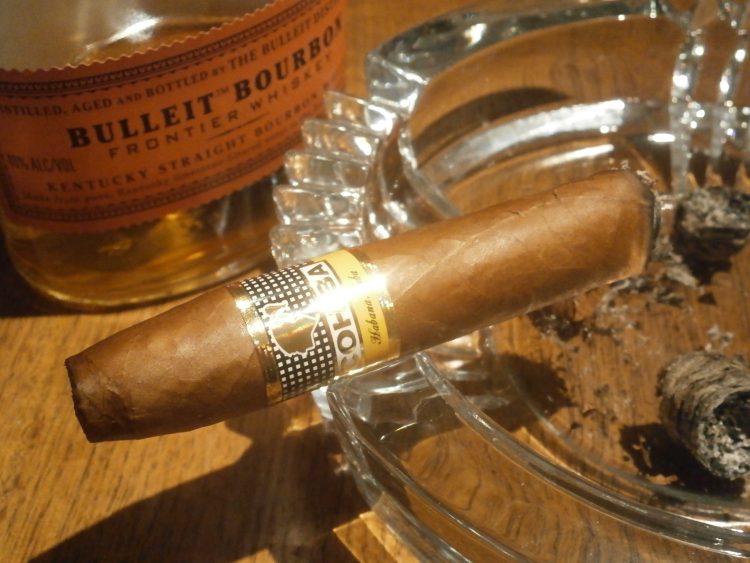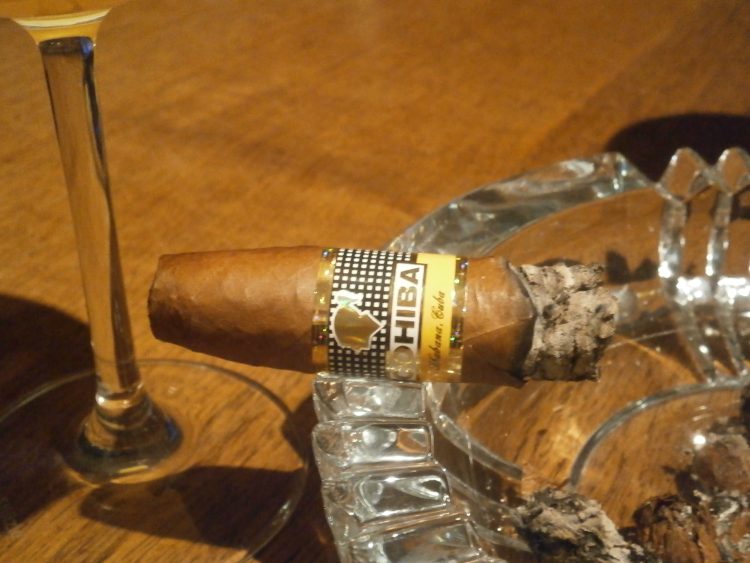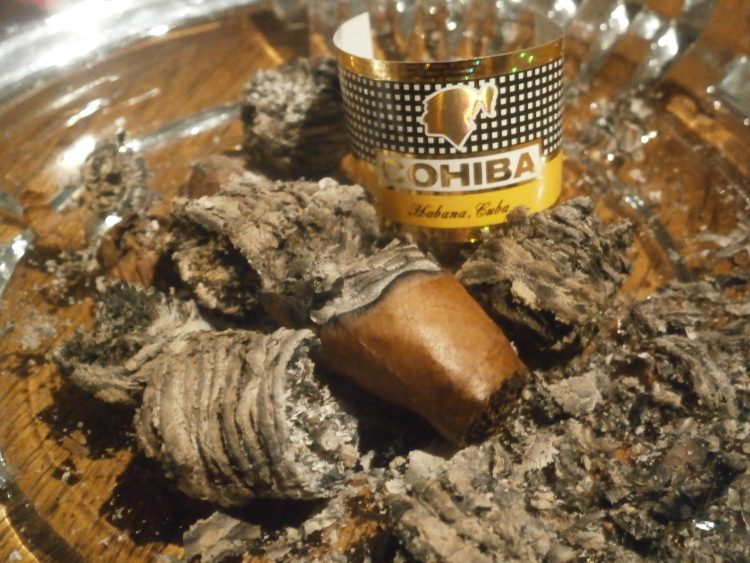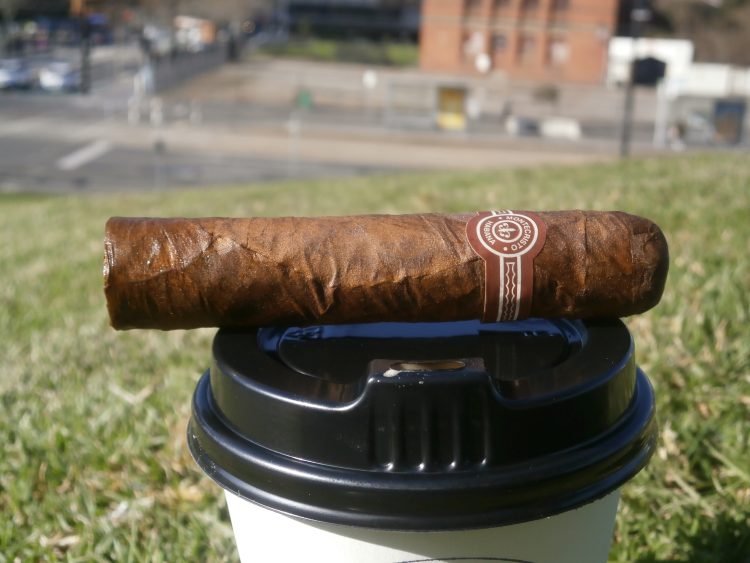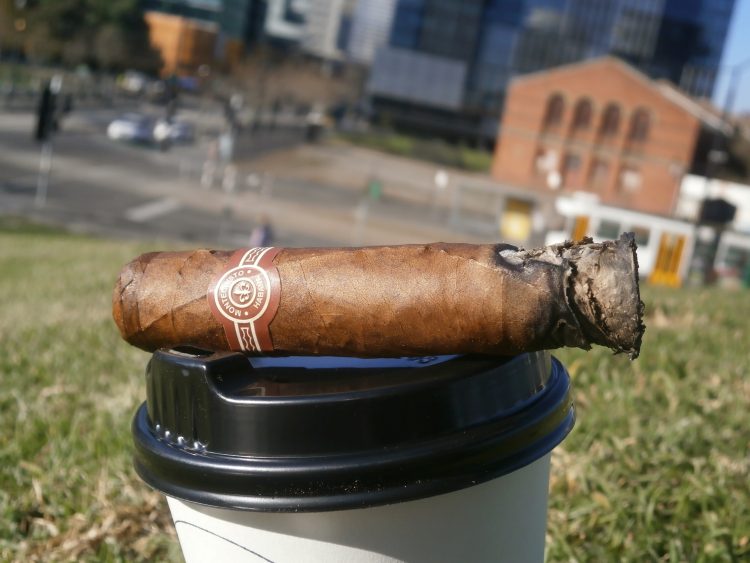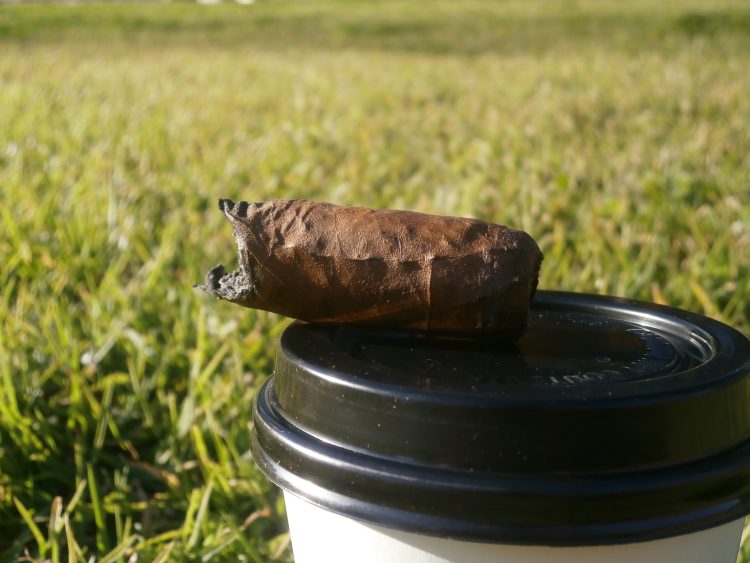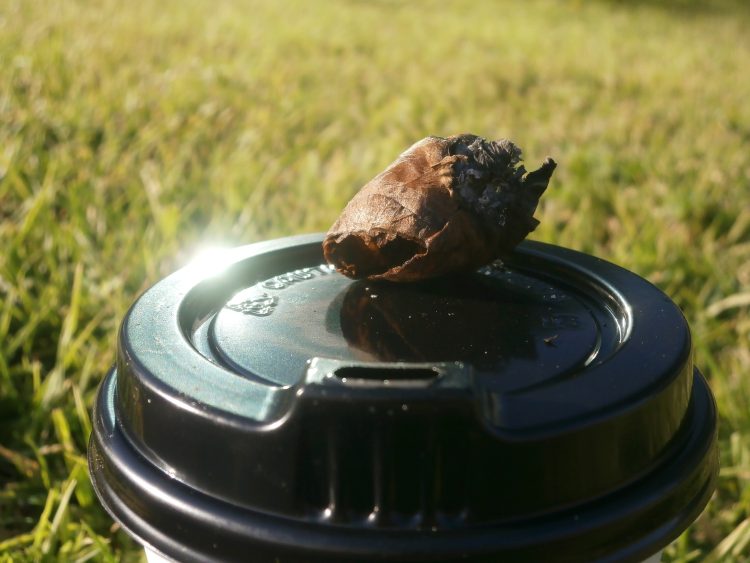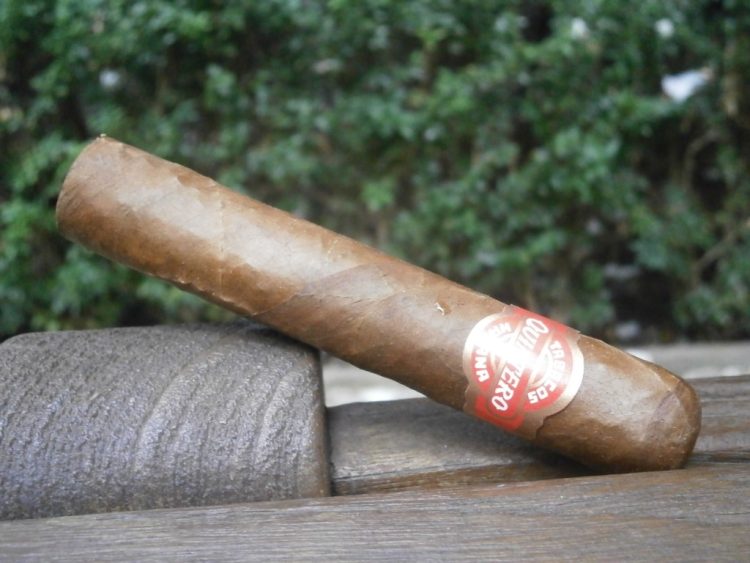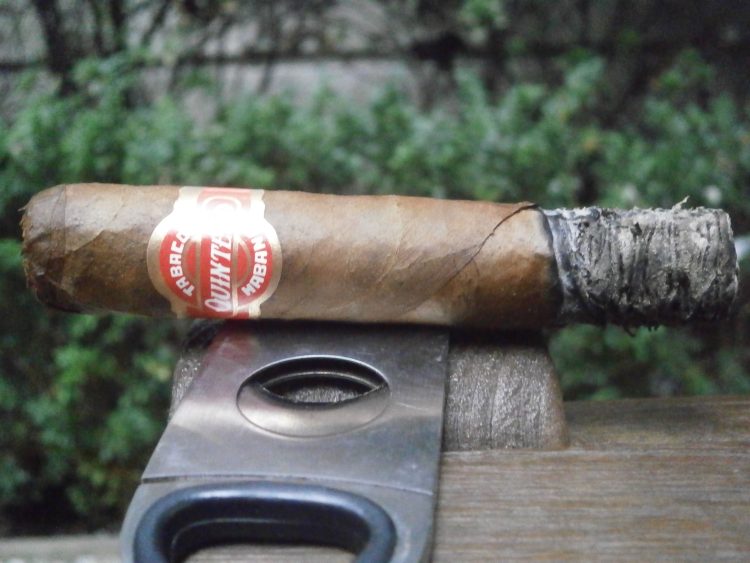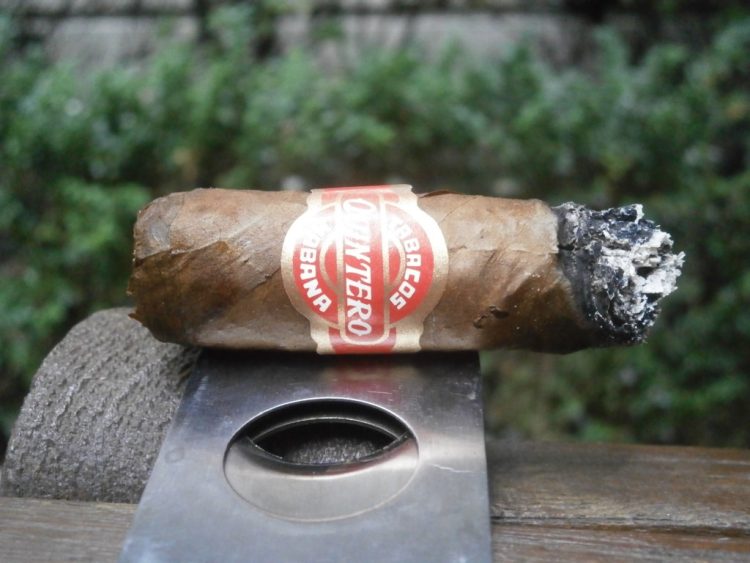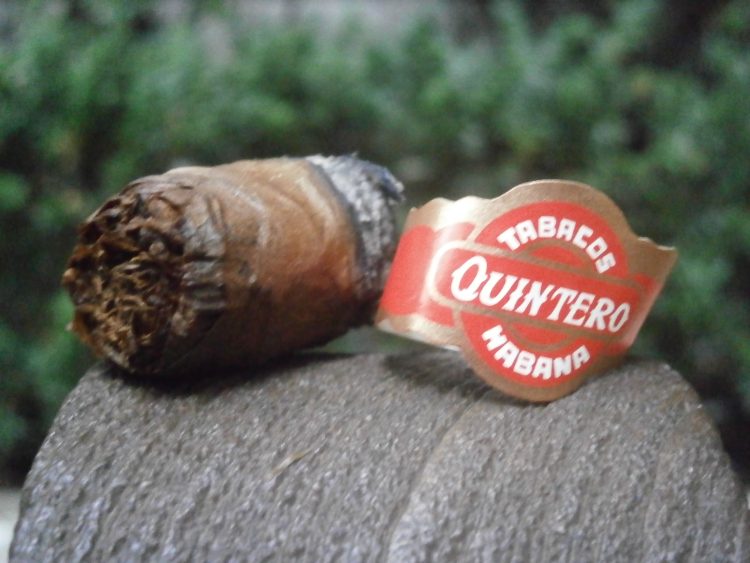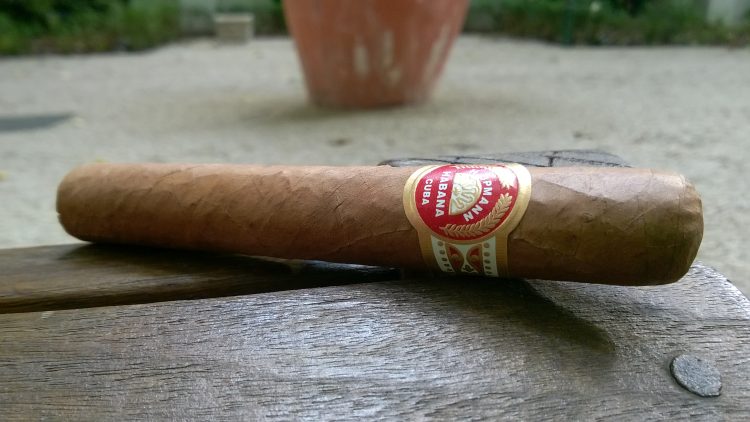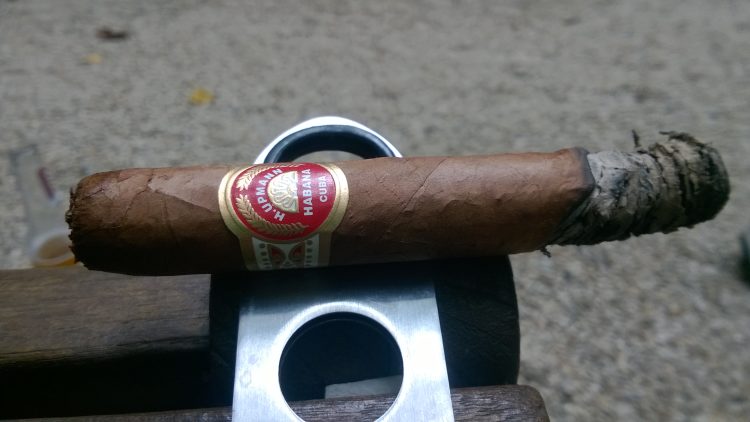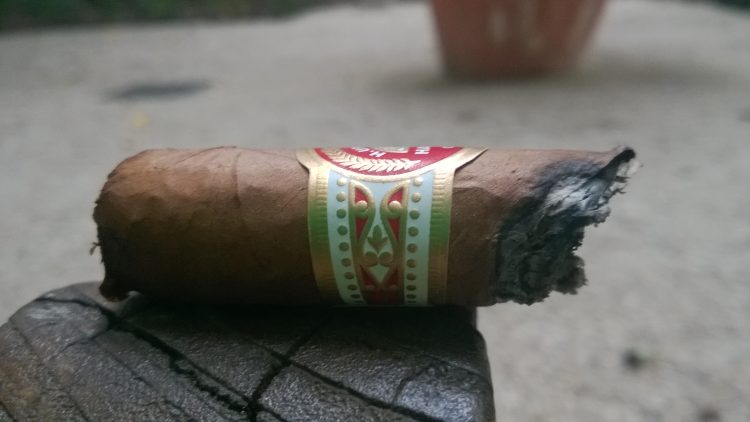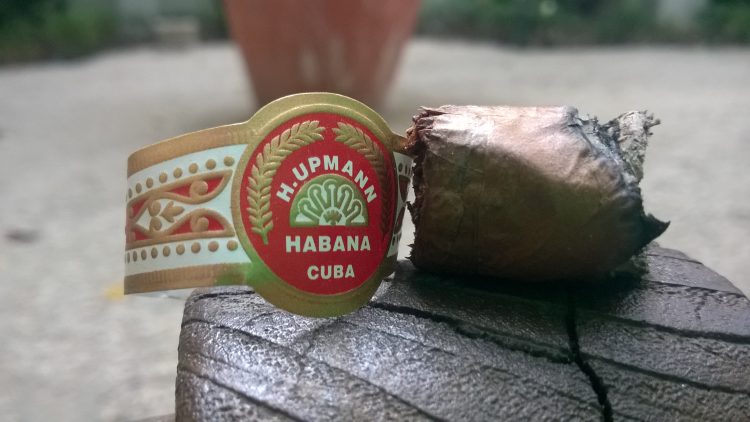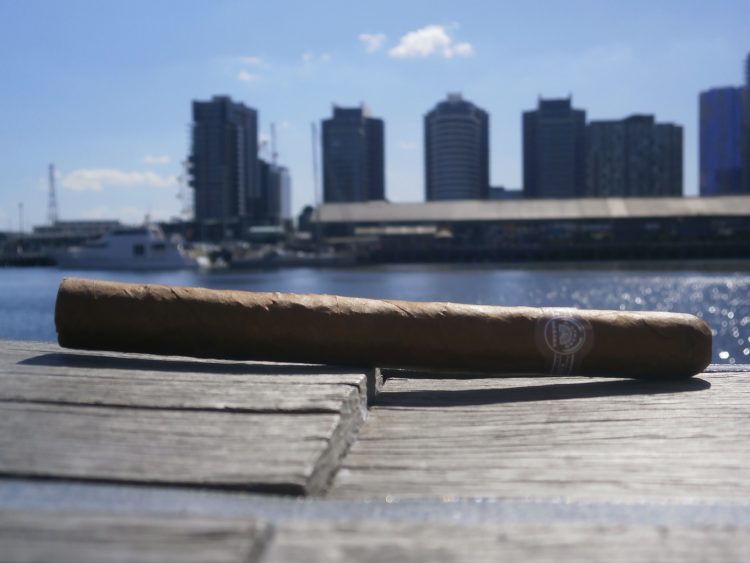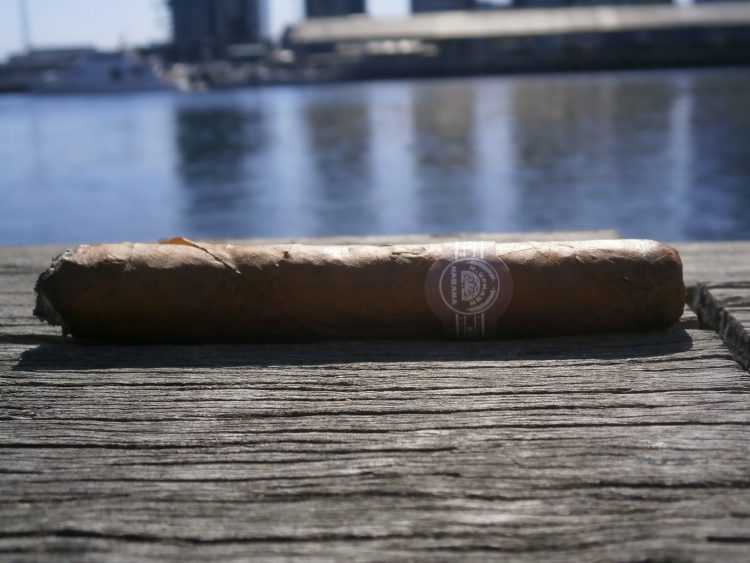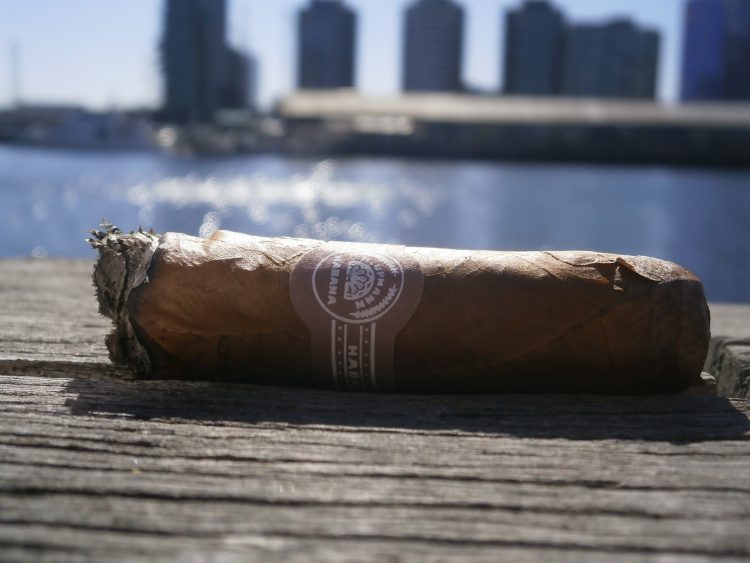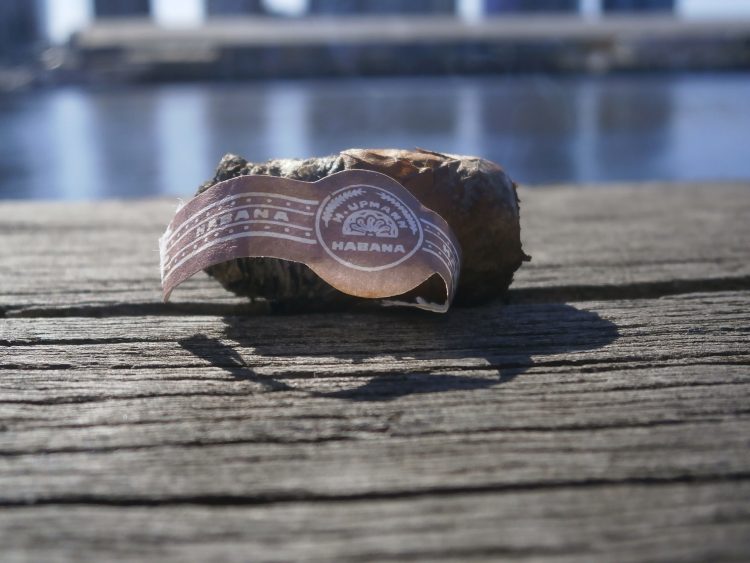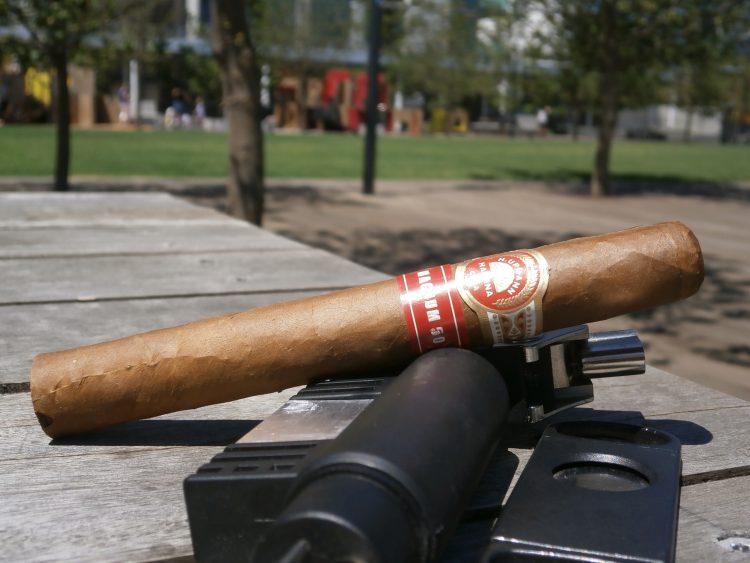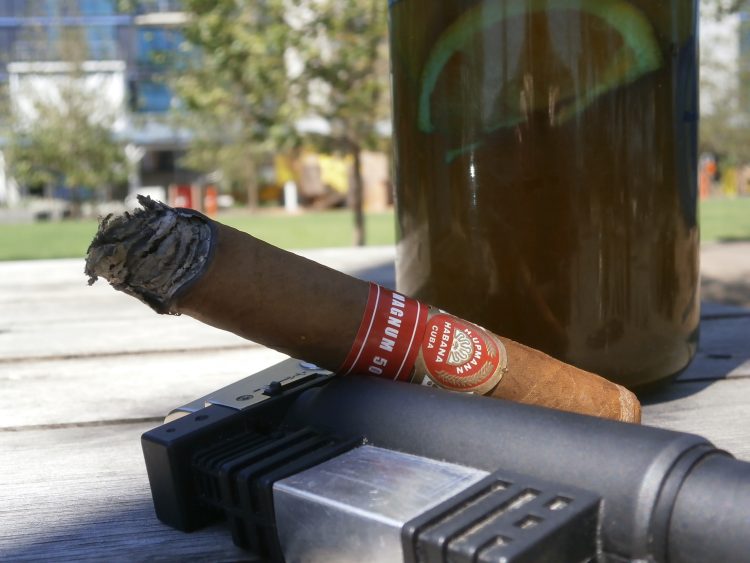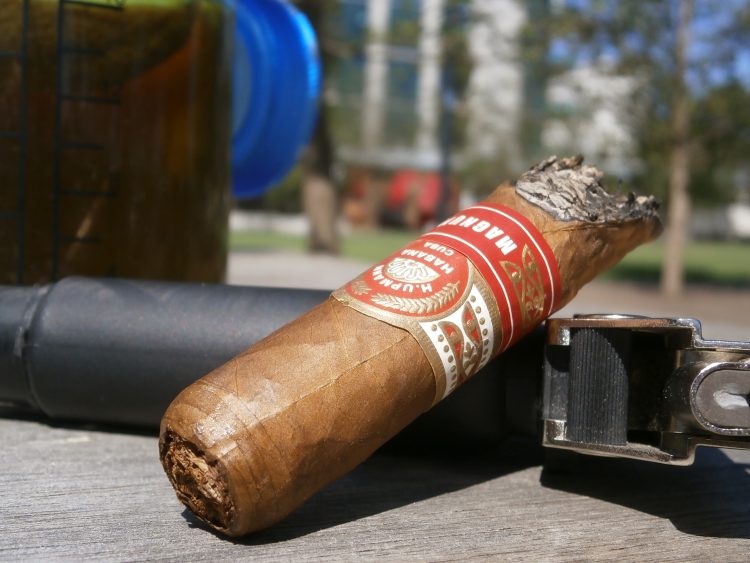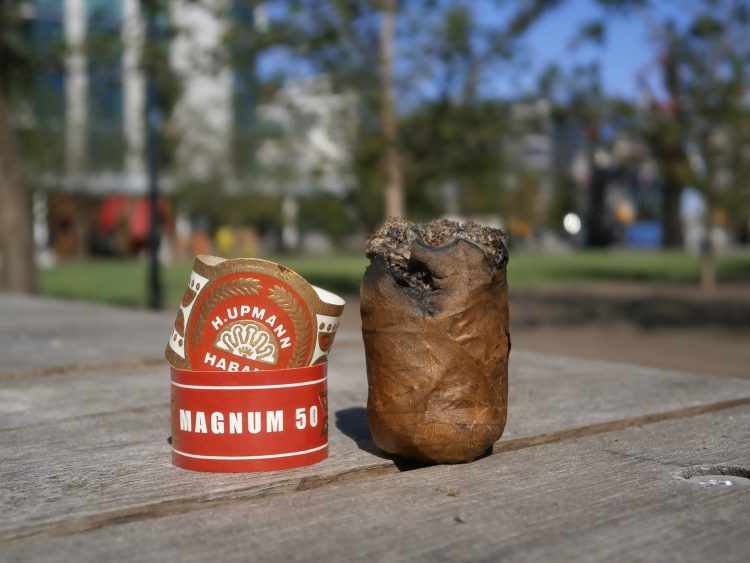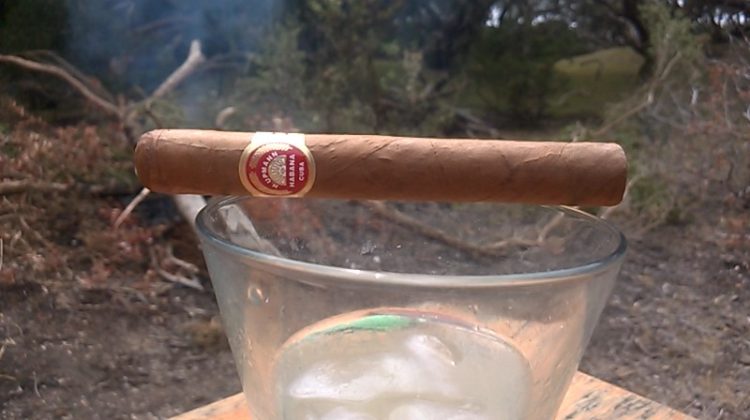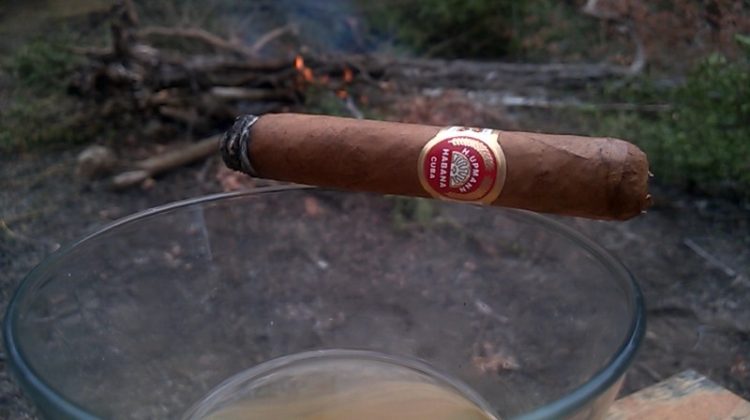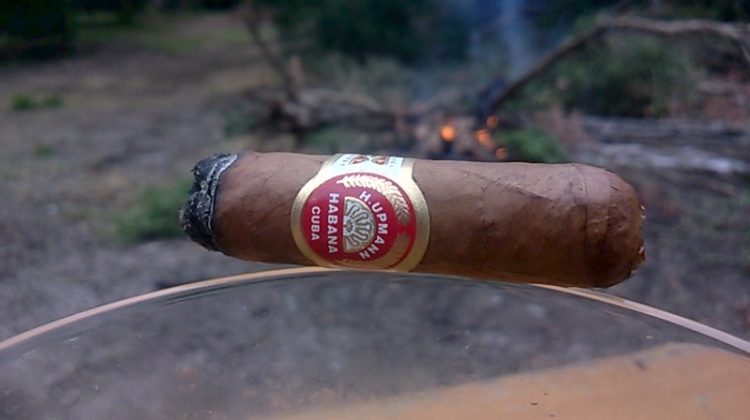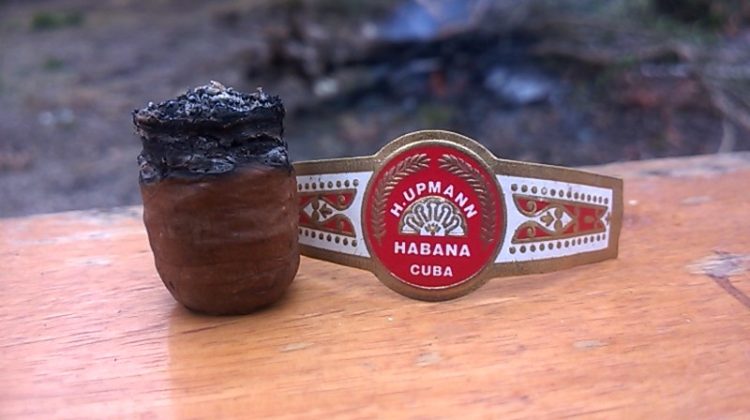Measuring in at 42×142, the Romeo y Julieta Cedros de Luxe No. 2 is the same ring and only a centimetre or so longer than the Petit Coronas and Mille Fleurs that I have written about over the last few weeks. The Cedros de Luxe No. 3, on the other hand, is exactly the same size as those cigars. Why didn’t I stick to the theme and review that? I’m not sure, I guess I ordered the wrong one.
The Cedros de Luxe line is interesting mainly because they come wrapped in thin cedar sheets, a feature found almost nowhere else in the Habanos line-up. It protects the cigar to some extent, but mainly the theory is that with many years of aging, the cedar will impart a delicate cedar spice to the cigar. This example is not particularly old, three or four years at most, but one hopes for a decent smoke, even without the wood.
The cigar begins with strong tobacco and a rough, campfire edge. It lightens up a bit within the first inch, revealing wet, earth flavours, the smell of the bush first thing in the morning, while the underbrush is still damp. A little heavy for my tastes, but not unpleasant.
I’m sipping a mint julep, bottled from a recipe I created in a backyard some years ago while celebrating Australia’s national day. The backyard in question had a large supply of wild mint, but a somewhat limited supply of grog: one bottle of white rum, another of Bullit Bourbon. Mojitos seemed the natural choice, but, being a forward thinking individual, I knew that the rum wouldn’t hold out forever, and so decanted the whiskey into a jug, added a goodly bushel of mint and a cup of sugar, and left it to infuse a while. Mint Juleps are not a popular drink in my part of the world, and in all honesty, mine is the only recipe I’ve ever tried. I’ve no idea what the genuine article is supposed to taste like, but mine is delicious, like a glass of bourbon that someone has spat their chewing gum out into.
I was celebrating that particular Australia Day with two old friends: one, who we called the T-Rex (sadly departed, RIP), was the last of the great bachelors, a moneyed satyr of the highest order; the other, Sebastian, was the archetypal castrated husband; once a proud disciple of Bacchus himself, he had married a Korean harridan, and these days was essentially a character from Everybody Loves Raymond. By the early evening we had gotten ourselves on the outside of both the rum and the julep, and were rummaging through the liquor cabinet wondering what Malibu mixed with Yellow Chartreuse would taste like, when Seb piped up with an idea. “Y’know, there’s this club in the city we could go to… Kim told me about it… she said it’s like a proper hostess bar her bosses go to where they’ll sing karaoke and strip and you can feel ‘em up and stuff. She said I must never ever go there, so you have to keep it a secret if we go. They probably wouldn’t let white guys in though.”
A quick phone call confirmed that they would, in fact, let white guys in, and twenty minutes later we were ringing the discreet doorbell of the Ladybird Club.
At the midway point the cigar has strengthened, and is honestly pretty mediocre, the dominant flavour being strong tobacco and ash, with some dirt on the back end. It bears all the hallmarks of burning too hot, but I don’t see how that can be as I am smoking at a very leisurely pace, and the draw and construction are perfect. The condition feels about right, neither too wet nor too dry, and it lived a very similar life to the Petit Coronas and the Mille Fleurs, both of which were much nicer than this.
We were buzzed in and rode a dingy elevator up to the top floor, where we stepped into a lavish lobby, dripping with marble and fake gold. Behind the reception desk there was a gorgeous girl in a black blazer and four inch skirt. She eyed us very suspiciously, gestured for us to wait, and went to fetch the manager, a gangster with a t-shirt and a lot of hair-gel. I explained that we had a booking, and with one eyebrow raised he asked us if we knew what kind of club this was. We said we did, and he nodded at the girl who led us briskly down the hallway to our private room.
Shortly thereafter the waiter arrived and explained that this bar was bottles only, and after a brief discussion we ordered a Johnny Black at $220. He brought it with a jug of coke and another of green tea, and shortly thereafter returned with the girls. They paraded in, fifteen strong in cocktail dresses, and assembled in a line in front of the TV. We hemmed and hawed a little (our expectations had perhaps been raised a little high by the receptionist, a yardstick which these girls fell well short of), but eventually settled on our three. As he led the train of rejects out the waiter paused for a final word “girls eighty dollar per hour two hour minimum, okay?”
The evening degenerated from there. The girls were pretty shy, sitting quietly for the most part, and needing considerable egging on before they would sing us Chinese love ballads. I had my arm around mine, which she tolerated, but politely moved my hand away whenever it crept too close to the hem of her dress. Certainly there was no strip tease. It was about 10:00pm when we ordered our second bottle of Johnny and I had the briefest moment of clarity: “guys,” I said “do the math. We’re about $700 in at this point. I cannot afford this shit. If we’re staying it’s on one of you.” T-Rex waved it off. “Don’t worry about it.”
Sometime around 4:00am the waiter came in to tell us the place was closing up, and it was time to settle the bill. The girls bolted out of there like high schoolers at final bell, without goodbyes. It was almost as if they were eager to be done with us. The gangster was on the front desk, and he grinned at us while the invoice was printing. “You guys have a good time?” The total was $2600. T-Rex threw down his Platinum card.
Outside we were remorseful. “Rex, I’m so sorry man, I’ll pay you back, but it’s going to take me a few months, I can’t take it out of the joint account and I only get $400 a month spending money” said Seb. “Guys, please, Kim can never know about this ever… no jokes, don’t tell anyone she knows… never.”
I took a different tune. “Man, do you know what we could have bought for $2600? We could have had a party at my house with fifteen models! We could have gone to a strip club and had an eight hour lap-dance! We could have gone to a brothel and had three hookers sing karaoke with us all night! We could have bought a bottle of Louis-tres and used that to pick-up some skanks! Screw you Rex, that is your bill, you’re not getting a cent out of me!”
T-Rex was feeling good. His girl had given him her number. He wouldn’t find out it was fake until morning.
About three hours later I was awakened by the insistent peel of my telephone. I ignored it a first, but whoever it was kept calling and calling, so eventually I fished it from my pants pocket on the bedroom floor. It was Sebastian. “Hey man, so the story is that you and T-Rex had been to that place before and you knew it wasn’t dodgy, okay?”
“What?”
“For Kim, she’s gonna ask you.”
“How will she find out?”
“I told her.” I sighed an exasperated sigh.
“Why?”
“She would have found out anyway… whatever man, just tell her you guys went there before, okay? Tell her you knew it wasn’t dodgy.”
“Whatever, man, whatever.” I rang off.
She asked me about it a week later, and I gave her the party line, my voice hollow with untruth. She didn’t buy a word of it, and I didn’t have much of an answer for her follow up question. “But why would you go back and spend $2600 dollars if you knew it was just karaoke?”
The epilogue came eleven months later, when Sebastian got to talking with one of his wife’s drunken bosses at her work Christmas party. “Oh yeah, that’s what they always do, bring in the ugly girls first, you just have to send them away and they’ll bring in a new set… what do you mean, just karaoke? No, the girls don’t get paid by the bar, they get a percentage of your drink bill, but mainly they make their money from tips. You just have to pay them, strip show, blow jobs, sex, whatever you want. No wonder they didn’t like you, you made them work all night for free!”
The cigar ends much as it has been the whole time: strong tobacco, tar and ash. A very mediocre smoke, with little complexity. Much inferior to the Petit Coronas and Mille Fleurs. A pity. I’ll try and revisit it at some point with an older model.
Romeo y Julieta Cedros de Luxe No. 2 on the Cuban Cigar Website
